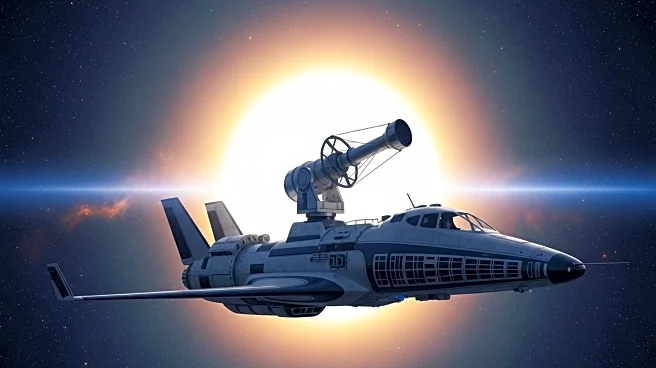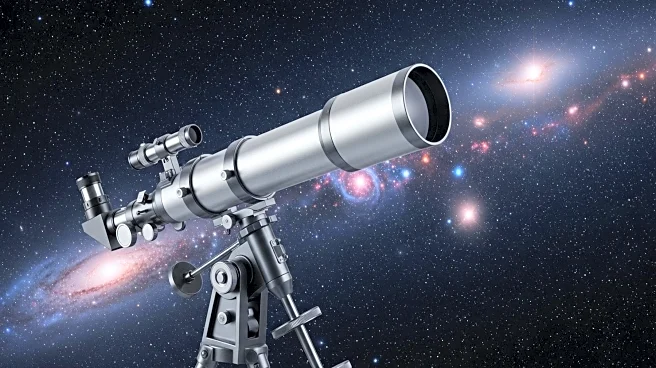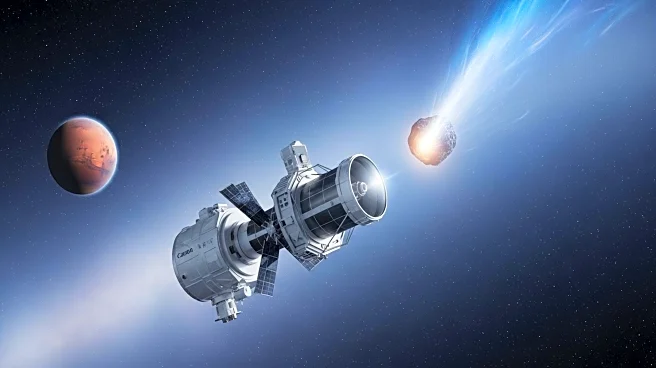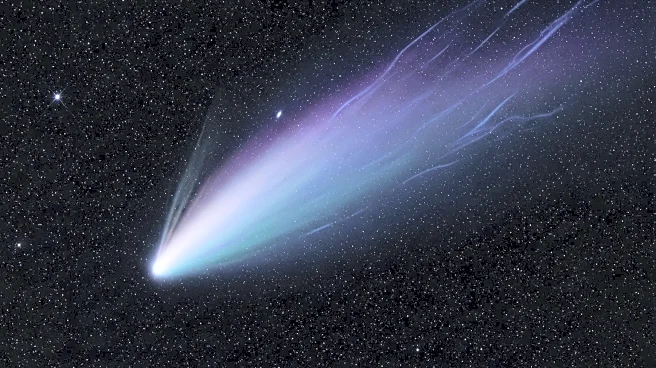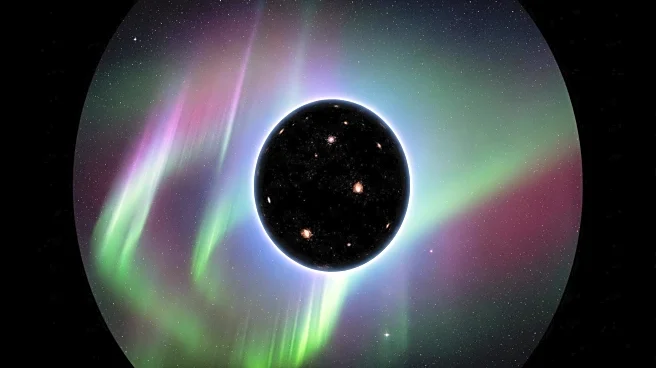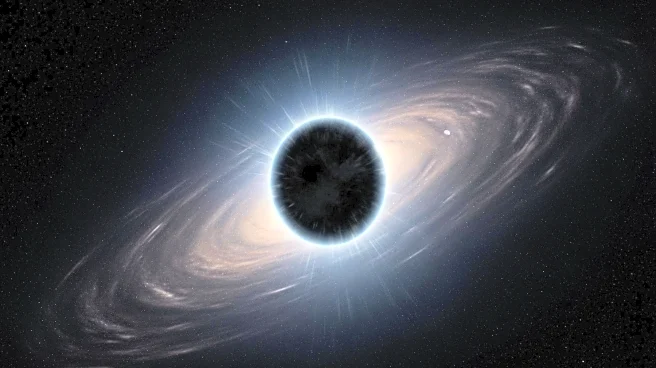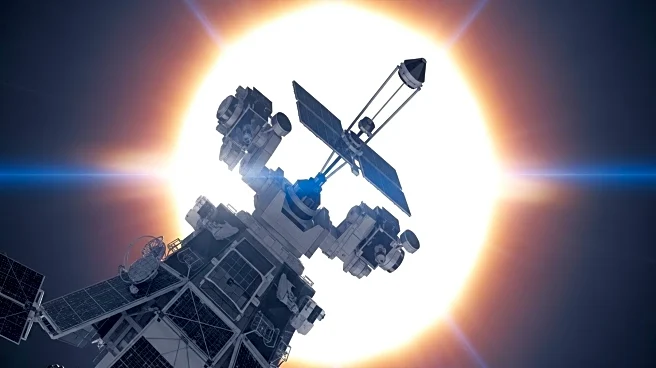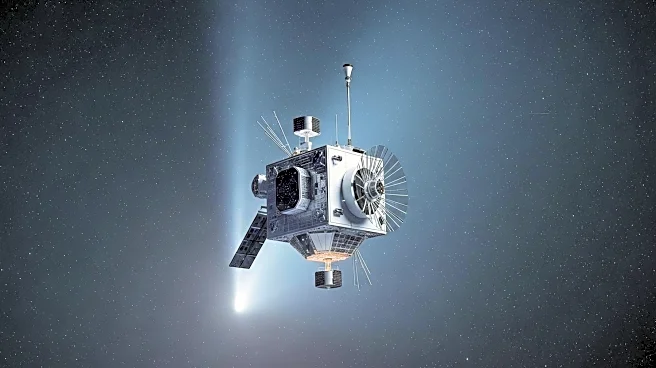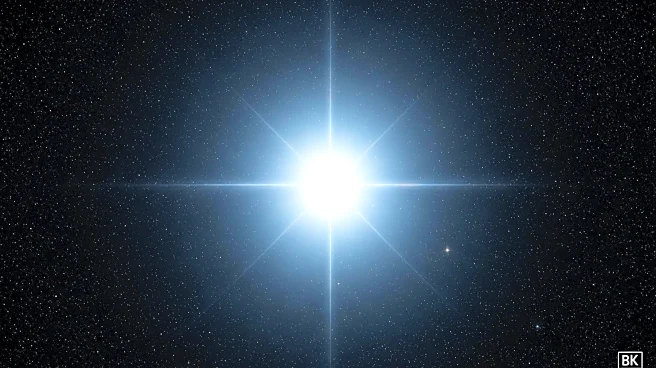What's Happening?
Astronomers have identified a massive wave pattern within the Milky Way galaxy, affecting the motion of stars and cosmic dust. This discovery was made using data from the European Space Agency's Gaia space telescope, which revealed that the wave spans 30 to 65 thousand light years. The wave appears to emanate from the center of the galaxy, influencing the radial and vertical motions of over 20,000 young stars. The cause of this wave is not yet fully understood, but it may be linked to past interactions with a dwarf galaxy or other cosmic events.
Why It's Important?
The discovery of this wave pattern is significant as it provides new insights into the dynamics of the Milky Way. Understanding these motions can help astronomers learn more about the galaxy's formation and evolution. The wave's potential connection to past galactic interactions could offer clues about the Milky Way's history and its future trajectory. This research underscores the importance of continued observation and analysis of our galaxy to uncover hidden structures and phenomena that could impact our understanding of the universe.
What's Next?
Further analysis of data from the Gaia telescope and other observatories is expected to provide more information about the wave's origins and implications. Scientists will continue to study the motions of stars within the wave to determine its impact on the galaxy's structure. This ongoing research may lead to new discoveries about the Milky Way and its interactions with other celestial bodies.

